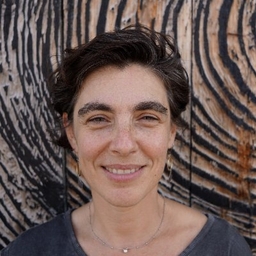
Articles
-
Mar 25, 2025 |
nytimes.com | Alla Katsnelson
On an early summer day in 1876 near Druid Hill Park in Baltimore, a middle-aged woman carrying three large, putrid mushrooms repulsed fellow travelers riding a horse-drawn trolley car. Even wrapped in paper, the stench of the aptly named stinkhorn mushrooms was overpowering, but the woman stifled a laugh upon overhearing two other passengers gripe about the swarm of flies around them. The smell didn't bother her.
-
Sep 11, 2024 |
nature.com | Alla Katsnelson
Living cells teem with proteins. But those proteins rarely work alone; they drive cellular behaviour by pairing up with other proteins to form transient or long-lasting complexes. “Most proteins in the cell are not monogamous, so to speak,” says Thomas Graham, a biophysicist at the University of California, Berkeley (UC Berkeley). Those relationships impact function: a protein can carry out several cellular tasks, depending on which molecules it interacts with.
-
Aug 8, 2024 |
thetransmitter.org | Sydney Wyatt |Sarah DeWeerdt |Alla Katsnelson |Steve Ramirez
Contributing writer The Transmitter Sydney Wyatt is a freelance health and science journalist in New York City. She specializes in neuroscience, psychology, medicine, mental health and health policy. She spent two years in Oregon’s capital city covering health care inequities for a USA Today network paper. She earned her B.S. in neuroscience from the University of Tennessee, Knoxville and her M.S. in journalism from Boston University.
-
Aug 7, 2024 |
thetransmitter.org | Alla Katsnelson |Grace Lindsay |Emily Sohn |Jill Adams
When neuroscientists study how behaviors or cognitive abilities are represented in the brain, they usually study them one by one. But that’s not how brains work. We know intuitively that learning builds on itself—you probably could not have learned algebra without first grasping arithmetic (even if you’ve forgotten it all now). A neural network described in a new study suggests how such additive learning might happen.
-
Aug 4, 2024 |
cen.acs.org | Alla Katsnelson
Picrotoxinin is a compound with a far-reaching history. Very bitter and highly toxic, it occurs naturally in the seeds of a climbing plant called Anamirta cocculus, which grows in Southeast Asia. For centuries, fishers have sprinkled the crushed and powdered seeds into bodies of water to stun fish, making them easier to catch.
Try JournoFinder For Free
Search and contact over 1M+ journalist profiles, browse 100M+ articles, and unlock powerful PR tools.
Start Your 7-Day Free Trial →X (formerly Twitter)
- Followers
- 0
- Tweets
- 0
- DMs Open
- No